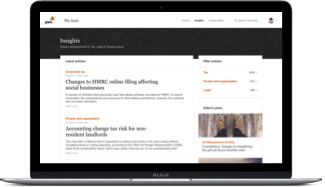Following the introduction of HMRC’s revised Business Risk Review (BRR) process on 1 October 2019, we have seen a number of changes in the way HMRC approach and conclude BRR cases.
Taking a step back, two main changes were brought into the process. Firstly, there are now four levels of risk: low risk: moderate risk: moderate-high risk: and high risk, with a separate risk for each tax regime. Secondly, those ratings are based on three behavioural factors assessed in the context of inherent business complexity:
For our clients who have engaged with HMRC in BRR discussions since October, it is clear the new approach has resulted in both a raised level of expectation from HMRC and more engagement on tax governance issues. We are seeing broadly four themes emerging:
Due to the more prescriptive nature of how HMRC will conclude on the risk rating to be applied for the three behavioural factors, HMRC are demonstrating a growing appetite for completing governance reviews and workshops with businesses, to better understand the processes and controls businesses have in place to manage their tax risks.
We have seen that HMRC have been requesting enhanced documentary evidence as to how a businesses processes and controls operate in practice.

